Called Kyu gunto or Russo-Japanese swords, these katana and western saber hybrid swords were used by Japanese Army and Naval officers in WWII, the earlier Russo-Japanese war and Imperial Japans colonial conflicts. They were produced from 1875 until 1934 and existed alongside the more traditional looking Shin-Gunto swords. All officers in the military were required to wear a sword as a badge of rank. The one offered here is in the style of the army Kyu-Gunto, for it has the more extensive grip backplate – the naval variants had typically slimmer backplates.
Gunto means military sword – a reference to the mass-produced swords, different than the hand-crafted artisan swords of Japans past. Kyu gunto means old military sword – as opposed to Shin gunto the new military sword. The Kyu gunto style became popular as the Japanese modernized their armies with western technologies and doctrine, wholly adopting the military practices of colonial powers while actively discouraging the feudal past. Thus the Kyu gunto style was a katana-like blade with motifs that harkened to Japans martial past while embracing the grip and overall styling of western sabers. In the years before WWII, Japans nationalism soared as it recognized its colonial ambitions and the once shunned samurai became nationalist symbols of power and martial heritage. Thus the newer Shin gunto swords emulated the samurai blades of old and were produced from 1935 to 1945.
Both types of these mass-produced military swords are called Showato to separate them from traditionally made swords. Due to their mass-manufactured nature, Showato are not considered true Japanese swords and can be confiscated within Japan.
This Kyu gunto Russo-Japanese sword has a unsharpened, tempered blade of high carbon steel. The hilt is of brass lavishly adorned with cherry blossoms. The grip is of hardened brown leather with inlaid copper wire. The scabbard is of steel with a steel hanging ring. The sword has a locking mechanism that holds the scabbard to the hilt. A small cherry-blossom etched button beneath the guard releases the scabbard.


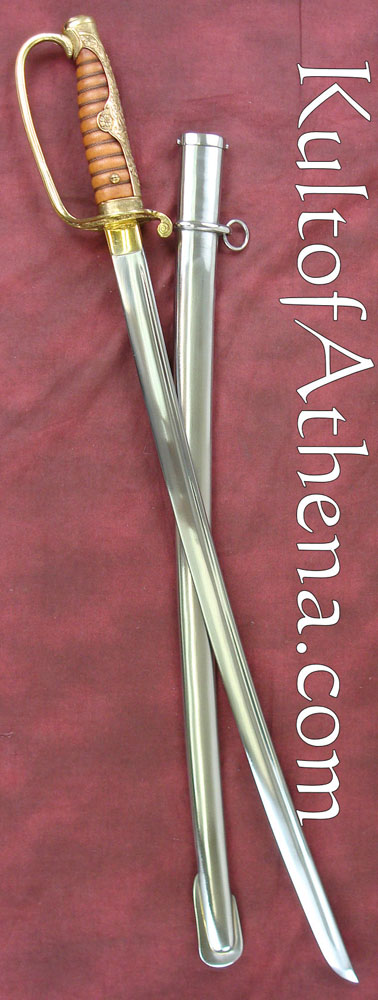


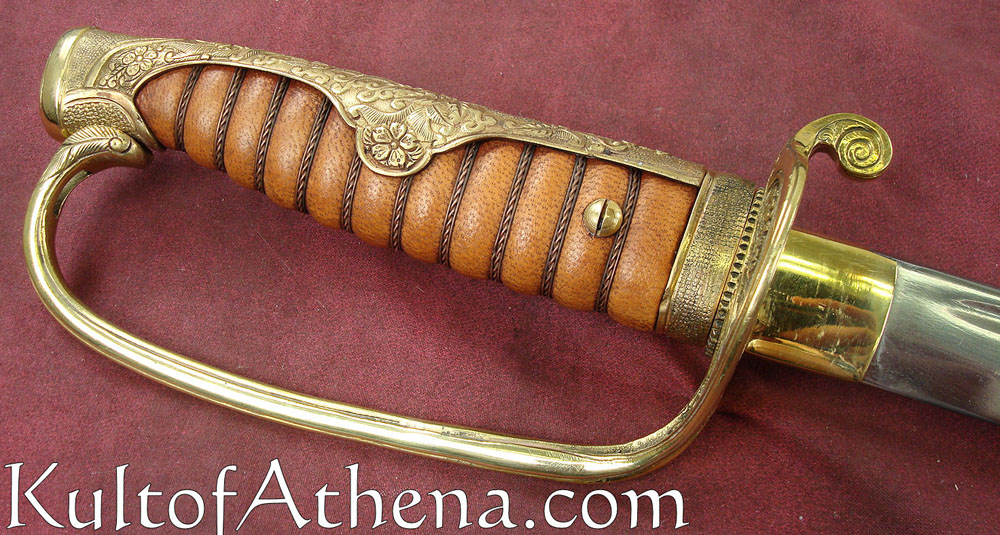
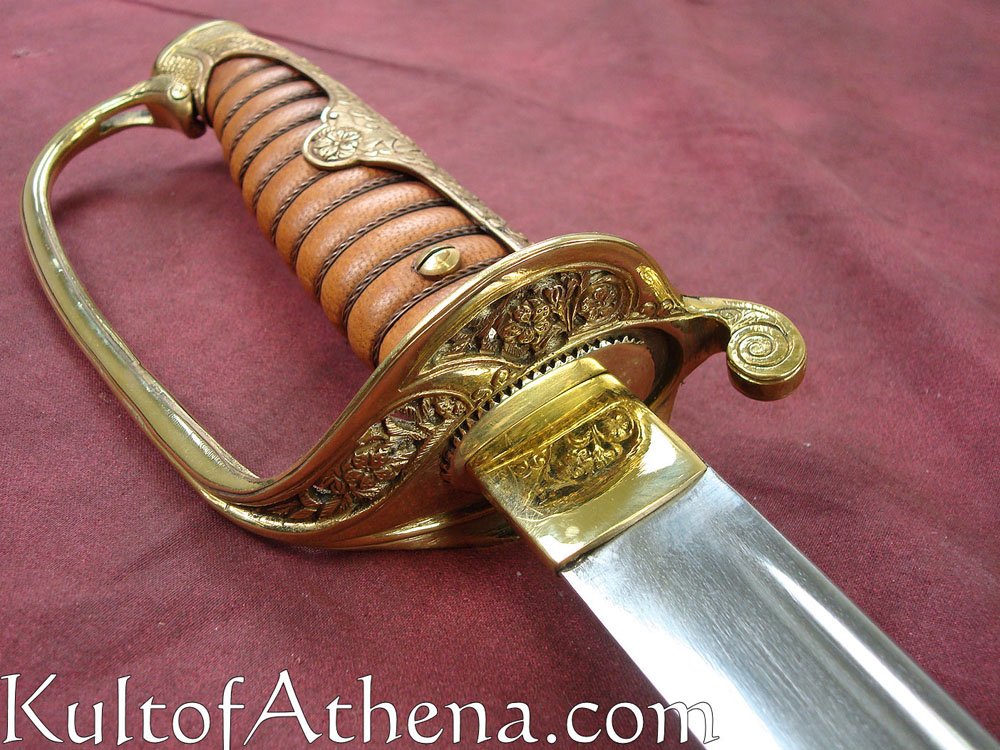
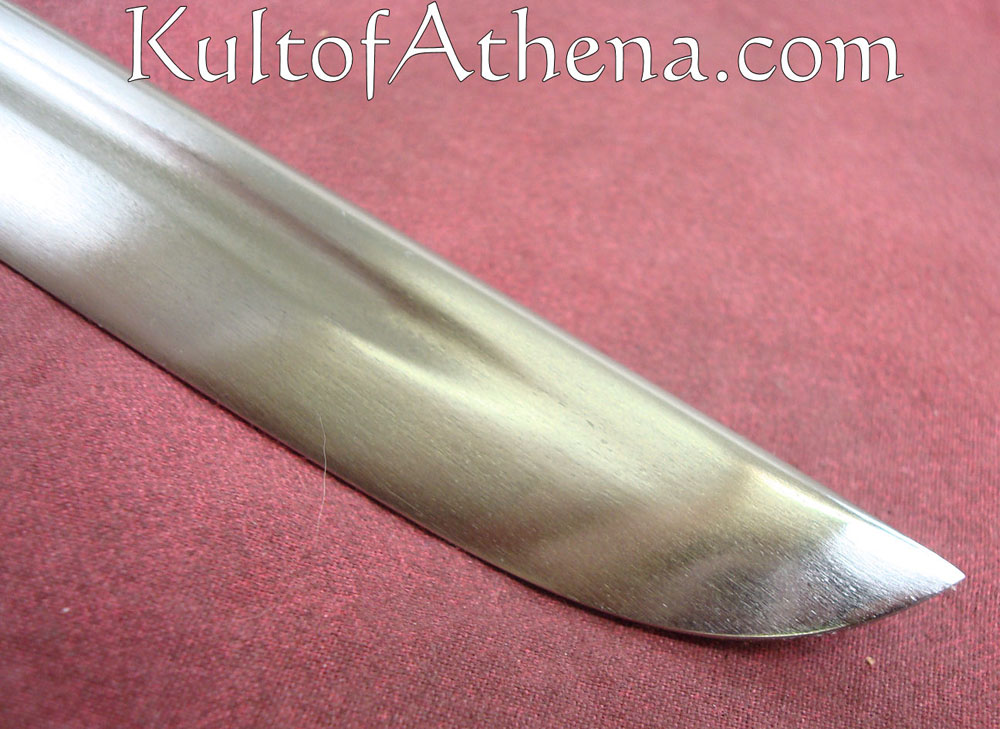


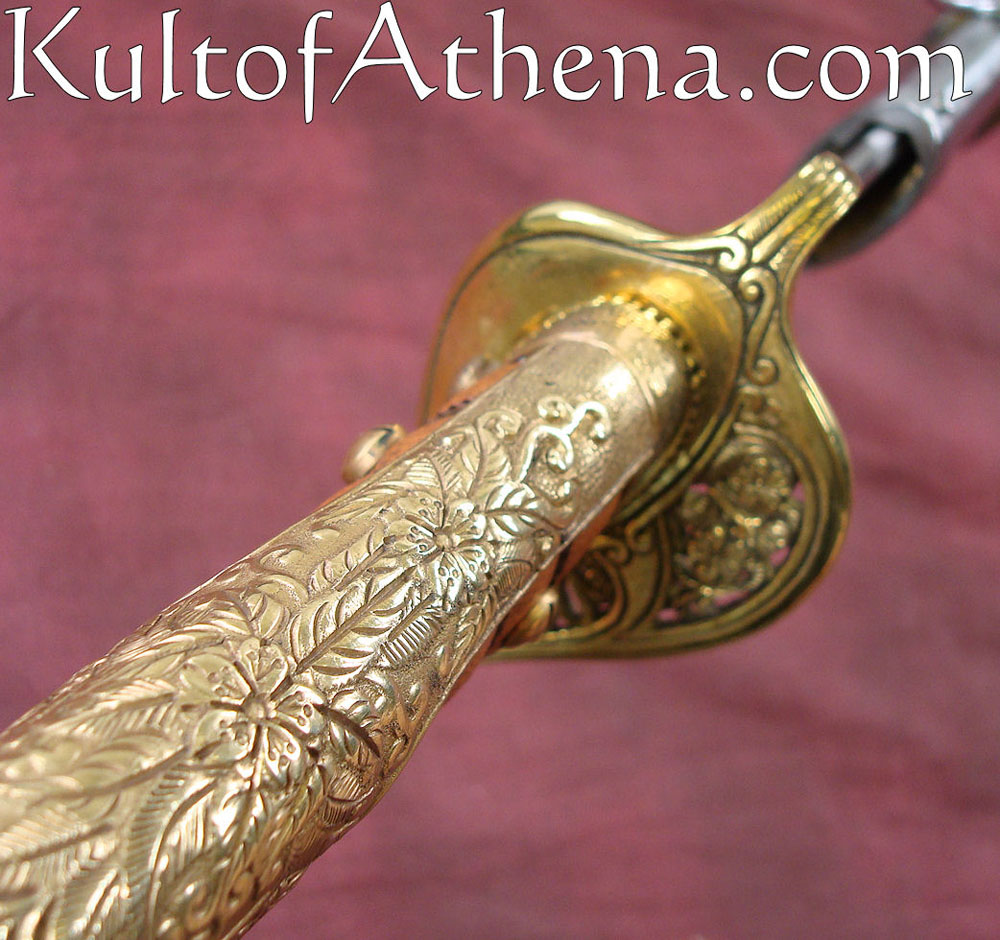



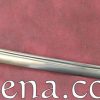
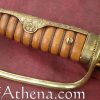
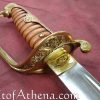
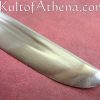
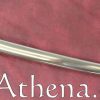
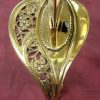
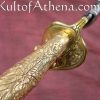
Joseph Palmer (verified owner) –
I would have to say I’d give it about 31/2 stars. The sword is a very nice looking piece. The blade is where it really let’s the sword down. There is no doubt in your mind that you are handling a replica, especially when you look at the blade. The Bohi is mostly straight and the blade is quite narrow. I have handled one or two when I was younger and remember them having rather substantial blades. The polish is passable.
I just think that Universal missed a golden opportunity to make something special if they had not gone so cheap on the blade. The fittings are not bad at all and very presentable.
It can fill a niche in your collection, but don’t get your expectations too high. I sharpened my own and it looks nice, although not razor sharp, but again presentable. The scabbard is very well done as are the handle mountings. You do get what you’re paying for. As long as you keep your expectations reasonable, you’ll be satisfied.